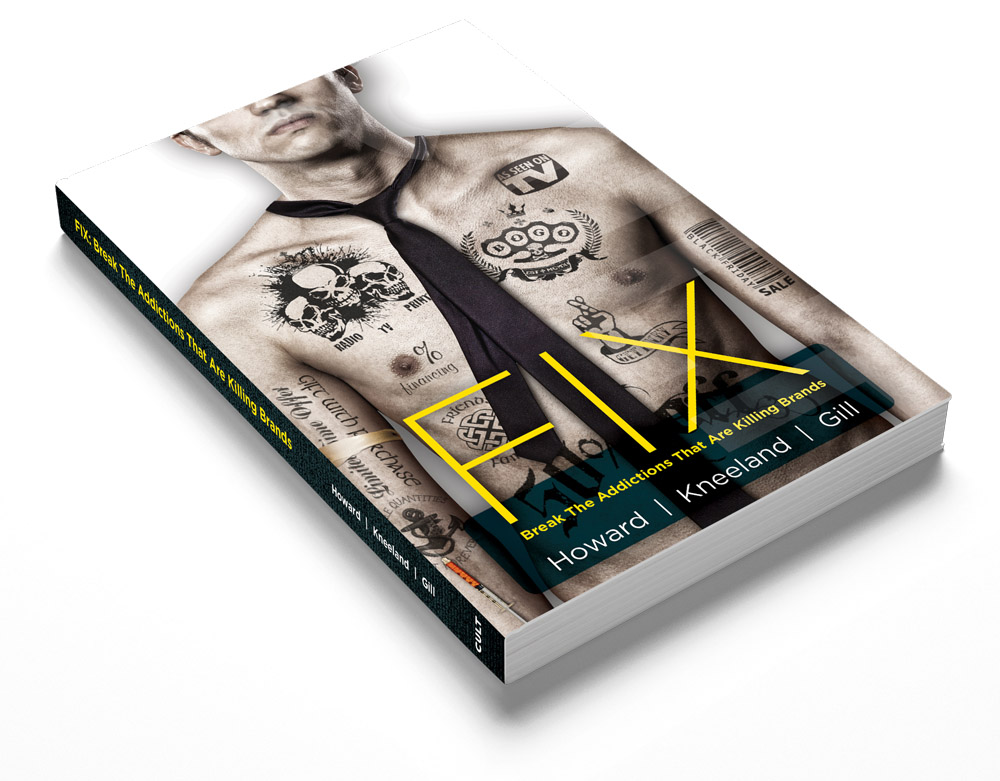Last week I had an opportunity to spend time with the marketing leader at Chick-Fil-A.
Among several fascinating tales that made me respect that cult brand even more than I already did was the origin story of their cow advertising that has earned a place on the Madison Avenue Advertising Walk of Fame and in an exhibit at the Smithsonian National Museum of American History.
Long story short, it was birthed out of necessity. In 1995, Chick-Fil-A lacked a meaningful advertising budget. They realized they could not afford to adequately support all their stores with paid advertising. So instead of quantity, they opted for quality. They decided to put life sized, 3-dimensional cows painting a plea for people to eat more chicken on one Atlanta billboard. The concept was so novel, so unexpected (heck, it doesn’t even show the product) that it captured people’s attention. Earned media replaced paid media as locals started asking, “have you seen that crazy billboard?” Eventually the national media picked it up, and the cows have been up to crazy antics ever since (check out the fun at: http://inside.chick-fil-a.com/20-years-of-cows/)
Paid advertising is grossly over-funded and far too many marketers rely on it instead of doing “real” marketing.
Uber is another mega brand that relies heavily on the cult brand principle of making impressions instead of buying them. Paid advertising is grossly over-funded and far too many marketers rely on it instead of doing “real” marketing (I rant more about that topic at https://www.linkedin.com/pulse/break-your-brands-unhealthy-addiction-chris-kneeland?trk=mp-reader-card). But not Uber.
As reported by Russ Martin in Marketing Mag, in four short years Uber has exploded in popularity in Canada. In Toronto alone, nearly one million consumers use their service and the company now operates in Vancouver, Montreal, Ottawa, and Edmonton. What’s more impressive than its explosive growth, especially in the face of anti-Uber protests and heated political debates about the company, is its dependence upon earned media via local stunts that celebrate the cities they operate in and delight customers, rather than paid advertising campaigns.
What’s more impressive than [Uber’s] explosive growth is its dependence upon earned media via local stunts that delights customers, rather than paid advertising campaigns.
Here are four quick examples:
1) On St. Patrick’s Day last year, Uber set up breathalyzer kiosks around downtown Toronto outfitted with straws consumers could blow into. If they blew over the legal limit for driving, they could use the kiosk to order a ride home free of charge. The stunt earned 55 million media impressions and resulted in over 500 articles published worldwide.
2) Shortly after Uber launched UberX in Toronto, the brand received a tweet from DJ Deadmau5 inquiring about driving for the service. Though the tweet may have been sent in jest, the company reached out to the musician and asked if he’d be willing to do something fun together. Deadmau5 agreed to surprise Uber users ordering UberX rides in Toronto by picking them up in his McLaren. This stunt netted 17 million media impressions and 150 news articles.
3) Each city Uber operates in has a local customer service and marketing team. While the company encourages each city to tell a local story with its marketing, it also has a series of case studies from around the world for the cities to draw from. One of the most successful is UberPitch. When the company brought UberPitch to Canada, it enlisted big name local investors including Dragons’ Den stars Joseph Mimran and Michael Hyatt. The program led to several actual business deals including two struck by yet another Dragon, Brett Wilson, in Calgary. In addition, it received 8 million social media impressions and 1,203 brand mentions on social media.
4) Delivering puppies via Uber is another staple stunt in the company’s arsenal. For $30, offices can order a 15-minute visit from dogs from local shelters – a tactic that’s led to loads of feel-good coverage for the brand. Last April, Uber brought the stunt to Toronto for National Adopt a Shelter Pet Day. Billed as a way to raise awareness for animal shelters, the stunt was such a success that Uber brought it to Toronto again this spring, as well as Edmonton, Ottawa and Calgary. This earned Uber positive national news coverage from CityNews to CP24 and theToronto Star.
As we at Cult Collective have learned time and time again, earning cult-like followers has a lot less to do with the size of your advertising budget and much more to do with your willingness to behave courageously and do things your competitors are unable, or unwilling, to do.


